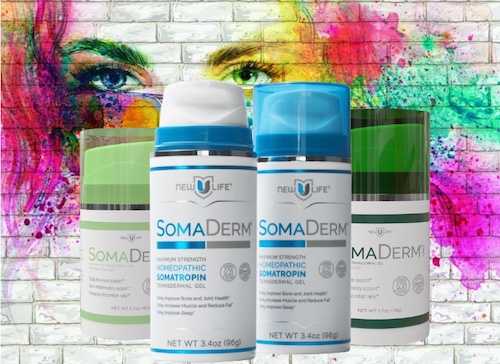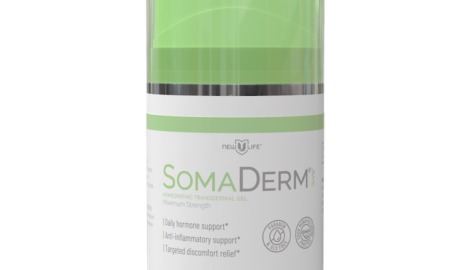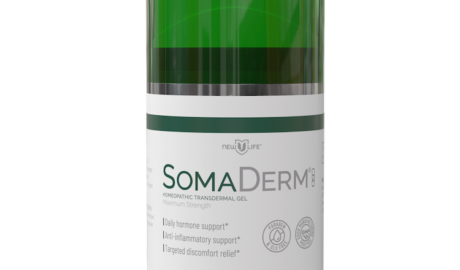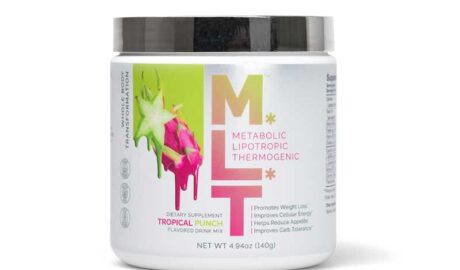Psychedelics have shown great promise in treating a range of mental-health conditions, from PTSD to depression—but they’re not without significant downsides. People who take psychedelics can experience bad trips and unpleasant or dangerous side effects, and the drugs can be time-intensive and arduous to administer.
These drugs are “very effective, but they’re scary and they’re chaotic and they’re unpredictable,” says Dillan DiNardo, CEO of psychedelic drug development company Mindstate Design Labs.
Mindstate, and plenty of companies like it, think they’ve found a workaround: what if psychedelics could be tamed and toned down, tweaked to keep their psychological benefits while reducing many of their risks? This approach could, in theory, improve patients’ experiences, boost the drugs’ efficacy, and make psychedelics more palatable to regulators at the U.S. Food and Drug Administration (FDA)—who earlier this year dealt a blow to the legal psychedelics movement by saying they would not approve MDMA to treat PTSD without additional safety and efficacy data.
Classic psychedelics, some advocates argue, come with too much baggage. But these altered, “next generation” medications may be the future, says Cosmo Feilding Mellen, CEO of Beckley Psytech, a company working on one such drug.
The pitfalls of psychedelics
Psychedelics are thought to improve mental health by boosting neuroplasticity, helping the brain grow and form new connections. MDMA, known for promoting empathy and open-mindedness, seems to put people in a headspace where they can reprocess traumatic experiences. Some research suggests psilocybin, a psychoactive compound in magic mushrooms, eases depression by rewiring the brain, altering its landscape to disrupt toxic thought patterns. Other psychedelics and hallucinogens, including LSD, DMT, and ibogaine, also appear to promote psychologically beneficial changes in the brain, making them promising treatments for conditions including anxiety, depression, and substance-abuse disorder.
But these drugs are messy. All of them, to varying degrees, come with side effects, ranging from relatively benign (nausea, tooth-grinding, sweating) to more concerning (cardiovascular risks, seizures, impaired judgment that can lead to dangerous situations). And using psychedelics to treat mental-health conditions isn’t as simple as prescribing a pill. Under current research protocols, patients often need to be monitored by multiple mental-health professionals during trips that last six hours or longer, which are sometimes augmented by additional psychotherapy sessions. That’s logistically difficult in a resource-strapped mental-health system, but also potentially intimidating for patients. If they get caught in a bad trip, feeling anxious and scared, they may be in it for hours on end.
Read More: How to Stop Checking Your Phone Every 10 Seconds
When an expert panel that advises the FDA met in June to discuss MDMA’s potential use as a PTSD treatment (when coupled with psychotherapy), its members had numerous concerns—including, among others, MDMA’s potential to cause heart problems and the need to carefully monitor patients in an altered state of consciousness. The agency’s advisors ultimately voted against approving the drug, and the FDA followed their advice.
That decision “certainly rattled some cages” for others working in psychedelic development, and “understandably so,” says Dr. Srinivas Rao, co-CEO of Atai Life Sciences, a biopharmaceutical company that researches and invests in psychedelic drug development.
One way companies are charting another path forward in the wake of that decision? New—and theoretically improved—drugs.
How psychedelics 2.0 would work
Atai, for one, is experimenting with an alternative form of MDMA called R-MDMA. The drug is still in early-stage safety testing, so it’s too soon to say how well it will work against its intended target, social anxiety disorder. But early data suggest that, compared to typical MDMA, Atai’s version causes fewer side effects and a more introspective experience, Rao says.
The latter could be beneficial for a couple reasons, Rao says. It could make MDMA treatment less reliant on psychotherapy—a major sticking point in the FDA’s recent review of the drug, since the agency doesn’t regulate therapy—and eliminate some of the risks that come with using a drug that makes people feel “amorous” in a clinical environment, Rao says. (A widely publicized ethical breach in a previous MDMA trial involved sexual contact between a therapist and a patient.)
Read More: Why You Should Change Your Exercise Routine—and How to Do It
Atai isn’t alone in researching R-MDMA. The psychedelics company MindMed is studying whether it can improve social functioning among people with autism spectrum disorder. “It is our intention with this new program to offer patients new hope for meaningful connection,” MindMed Chief Medical Officer Dr. Daniel Karlin said in a company statement.
Meanwhile, other companies are trying to improve upon other psychedelics and hallucinogens. Researchers from Duke University, Yale University, and the University of California, San Francisco, are working on a drug modeled off ibogaine that, at least in animal trials, seems able to mimic its impact on the brain with fewer unwanted side effects.
And Beckley Psytech is developing a synthetic form of a drug similar to DMT, a compound in ayahuasca that results in short-lived but intense hallucinations and can lead to cardiovascular side effects, seizures, and other risks. In a small, preliminary company trial, Beckley Psytech’s drug brought long-lasting relief for treatment-resistant depression in about half of people who took just one dose.
In addition to its potential one-and-done dosing system, Mellen, Beckley Psytech’s CEO, says the compound has a major upside compared to traditional psychedelics: patients start to feel its effects in minutes and come down after about an hour. This not only frees up clinician resources, he says, but can also be a comfort to patients. “We can reassure a patient,” he says. “If you’re having a bad time, it should be over within an hour.”
Some companies are going even further, trying to remove the trippy effects of psychedelics altogether. Pharmaceutical company AbbVie is working with Gilgamesh Pharmaceuticals on such an approach, trying to develop “neuroplastogens” that can change the brain without causing intense psychoactive effects. Similarly, Enveric Biosciences is preparing to begin human trials of a molecule that has structural similarities to psilocybin but—in theory—causes minimal psychedelic effects when it binds to receptors in the brain.
The idea, says Enveric CEO Joseph Tucker, is to stoke neuroplasticity without getting people high. If it works, he says, such an approach would result in an effective drug that could be taken every day at home, just like an antidepressant—a model with which regulators and clinicians are already familiar, and one that removes the logistical burden of lengthy in-clinic sessions.
Read More: How to Be More Spontaneous As a Busy Adult
Still, Enveric’s approach is controversial. Some researchers argue that psychedelic experiences are the whole point, and that drugs won’t improve mental health without them. Studies have suggested that certain transcendent effects of psychedelics—like feeling one with the world—are linked to improvements in psychological symptoms.
To that end, Mindstate Design Labs is working to build drugs that cause psychedelic trips, but selectively. “Psychedelics are very promiscuous molecules,” Mindstate CEO DiNardo explains. “They interact with sites all over the brain.” Mindstate’s goal is to tailor them to cause more targeted effects.
Aided by artificial intelligence, the company analyzed troves of data on how different psychedelics affect the brain, including tens of thousands of “trip reports” from drug users. The idea, DiNardo says, is to get granular enough to design medications that alter consciousness in seemingly beneficial ways (like through mystical experiences, altered perceptions of time and space, and feelings of “sacredness”) while avoiding effects that don’t seem useful (like auditory distortions and loss of control).
Through its analysis, Mindstate identified a drug that DiNardo calls “psychedelic tofu”—that is, one that’s relatively bland and basic as psychedelics go, but that can be spiced up when paired with compounds that trigger desired effects in the brain. The FDA in early September gave Mindstate the green light to start testing its “tofu” drug; if that proves safe, the company will then begin testing it in combination with other compounds, DiNardo says.
All of these approaches are in early phases of research, meaning companies have to get through years of clinical trials—which may or may not turn out to be successful—before they can even think about applying for FDA approval. There are no guarantees, and early hype often doesn’t translate to scientific or regulatory success.
But DiNardo says he’s confident that psychedelics’ future is brighter than this year’s MDMA denial might suggest. “If we can selectively choose the effects” of these drugs, he says, “it just makes the regulatory path so much easier.”





